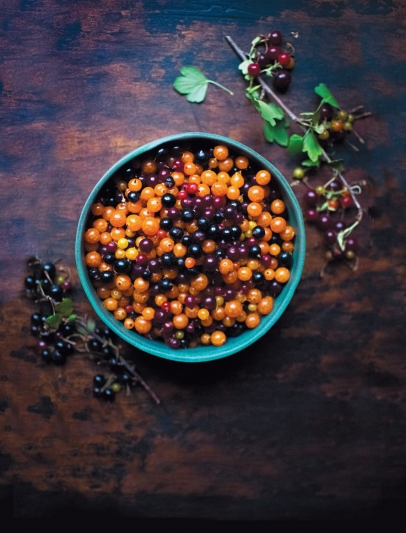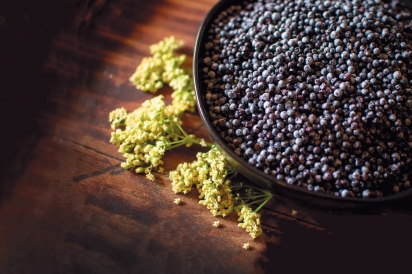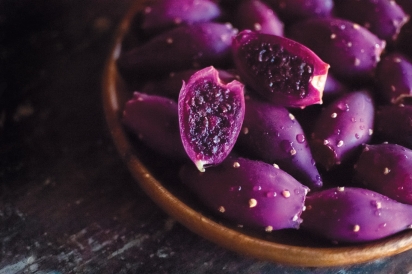Wild Fruit Bowl
Summer brings us vibrant fruits and berries in Ventura County despite the dry season. Overall, wild berries contain greater concentrations of nutrients than their cultivated counterparts—including anti-aging compounds such as antioxidants and resveratrol—once you get past some of their protective defenses. Please consult a field guide for proper identification before consuming any wild plant and keep in mind that these fruits and berries are part of a delicate ecosystem and should be mindfully harvested.
WILD CURRANTS AND GOOSEBERRIES (Ribes species)
Many species of currant and gooseberry are found in the oak woodlands and in higher elevations in our local mountains. Currants have a relatively smooth skin and vary in color from golden to dark purple, while the closely related gooseberries are covered in spines. Some gooseberries look downright threatening, but once you get past their defensive exterior, they are a delicious summer treat.
Why Should We Eat It? These small berries are high in vitamin C, which helps to support a healthy immune system. Additionally, they contain antioxidants, iron, zinc, magnesium and calcium that contribute to a healthy diet.
Harvesting Many species of wildlife depend on these fruits so it is best to harvest in moderation. These shrubs are easy to grow and can be found at many local nurseries. Currants are easy to harvest right off the bush, but gooseberries are best collected while wearing gloves.
Try It! Some species have better flavors than others, but these berries are tasty in a variety of jams, jellies, baked goods, chutneys or as a delicate garnish.
ELDERBERRY (Sambucus mexicana)
As one of our most abundant berries found in the chaparral and oak woodlands, the elder tree boasts both culinary and medicinal qualities in its berries, leaves and bark. Researched heavily for its anti-viral properties, this berry is also tasty especially with a little bit of extra sweetness added to it.
Why Should We Eat It? High in vitamins A and C, potassium, calcium and iron, plus antioxidant polyphenols and anthocyanins, these berries help to reduce inflammation and prevents the replication of viruses in human cells, helping us stay healthy.
Harvesting These berries are abundant in years with ample rainfall. They do contain notable amounts of hydrocyanic acid that accumulates as cyanide when consumed—fear not, though: These compounds are destroyed when heated by cooking. Elderberries dry or freeze well to store for the winter months.
Try It! Traditionally prepared as a medicinal syrup, this berry can also be delightful in pies, jams or baked into bread and breakfast goods, and can also be fermented into a simple country wine.
PRICKLY PEAR (Opuntia species)
Though daunting to the novice forager, the prickly pear cactus is an incredibly useful plant for both food and medicine. The fruits start to ripen midsummer and can be harvested well into late fall for their unique bright color and sweet flavor. The young leaves, also known as nopales, are commonly eaten raw or cooked in Mexican cuisine.
Why Should We Eat It? Not only tasty, this cactus is also highly medicinal. Prickly pear leaf is used to treat diabetes by lowering blood sugar, reducing cholesterol and fighting obesity. The entire plant contains notable amounts of anti-inflammatory and antiviral compounds, along with high levels of flavonoids, polyphenols and betalains in the fruits.
Harvesting There are many different methods to get past the thousands of tiny hair-like spines (known as glochids) that cover both the fruit and the leaf. It is best to clean them in the field with a stiff brush before bringing them home and into the kitchen. Wear gloves to finish cleaning with a dedicated scrub sponge under running water. You can eat them raw at this point (discarding the seeds), or juice them in a fruit press.
Try It! Usually prepared in sweet applications (think juice, syrup, smoothies, jelly, candy, sorbet, margaritas, wine, soda, etc.), the magenta-hued juice can be used in savory dressings and sauces as well.







